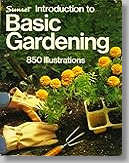believe my own stories."
-Washington Irving, Tales of a Traveler, 1824
| FAVORITE HAUNTS |
Book Search
StoryPeople
2 0 0 0
Welcome to
PenHead.org, an oasis of uninformed analysis in a desert of educated guesswork. What is a Penhead? Do you fancy yourself a writer? Enjoy a good read? Then you may already be a Penhead yourself!
We are your source for original stories, the occasional interview with our favorite authors, book and play reviews, recommendations
(of current and forgotten finds), and more.
Our Goal: World domination through the written word via the vast network of the internet. Until then, we'll be found risking what's left of
our reputations here, at PenHead.org.
Keep in mind the internet's similar to the Jersey Turnpike - it's all about hits and traffic - so visit often, share us repeatedly and we'll do our best to keep things interesting. Who knows... you might even be entertained.
With a string of bestsellers under his belt, Harold Robbins has earned the unique distinction as the world's bestselling storyteller. It's no wonder. His stories are well suited for the bestseller list, filled with morally bankrupt characters in lustful pursuit of wealth, fame and power. The Raiders, his sequel to The Carpetbaggers . . . more >
American Bluebloods
The Robins family are scions of east coast wealth. Heirs and heiresses to an international cosmetic firm . . . more >
Like the original, Revenge contains eight murders. Unlike the oriuginal, one of the slayings is solved for the reader. Also unlike the original, the prize money has increased a dollar, bringing the reward for its solution to $10,001.
Largely formulaic, Revenge lacks the freshness of its predecessor. On the upside, it features characters you've come to know from Who Killed the Robins Family. In the end, you're going to read it for the challenge of figuring out who the killer (or killers) are anyway, not for its literary value, which is limited . . . more >
The Organic Act of 1916 created The National Park Service with the purposeful directive:
Mt. Rainier, due to its close proximity to major urban areas (Seattle and Portland), is a popular training ground for trekkers with higher sights in mind. Sporting twenty-seven glaciers, Mt. Rainier is the most glaciated peak in the Lower 48.
The massive volcano was first circumnavigated in 1967 by a climbing party organized by Hal Foss. Called the "High-Level Orbit," there are three routes climbers can follow. The route of 1967 circumnavigated the mountain in a counter-clockwise fashion, but in June 1969 - inspired by the Foss party - an expedition led by Bill Boulton successfully completed the High-Level Orbit in a clockwise direction which inspired the first guided "orbit" in 1990 by Rainier Mountaineering. That expedition traversed the slopes counter-clockwise on skis, following the original route for the most part, with some . . . more >
The first recorded climb of Rainier was accomplished in 1884 along the Liberty Ridge Route. A 50 degree glacial climb, you can go up, but you can't go down as descending on the route is extremely dangerous and discouraged. Instead, climbers use the Emmons-Winthrop Glacier Route with its gentler 30 degree slopes for their ascent.
Mt. Rainier Climbing Guide: Profiling 2 Routes, by Brian Sperry, contains detailed descriptions of both the Liberty Ridge and Emmons-Winthrop Glacier routes. Like its sister publication Mt. Rainier Glacier Travel Guide: Adventures on The High Traverse Routes, edited by Dee Molenaar and Stanley Friedman (Stanley Maps, $24.95), it's made of a paper/polymer material that is water and tear resistant, and includes a 1:24,000 scale topographical . . . more >
Meet the Eldridges. He's looking to transition out of a state department job into the private sector. She's the photogenic up-and-coming host of a popular gardening show. Together they have two children, Janie, the youngest, and Martha the first-born. Janie fancies herself an amateur sleuth. Martha is a college student looking to leave her mark on the world. The Eldridges are in effect a flesh and bones version of that crime-fighting cartoon family of Disney fame, The Incredibles . . . more >
Horton and McNair have done their homework. They bring their expertise to the pages of Bulbs in easy-to-understand instructions that even the novice will feel confident in. Sharing their knowledge in a layout that's logical makes it easy to follow, which in turn enhances the clarity of their instruction. And to be clear, DIY books are nothing without clarity.
All the expected basics of bulb biology are covered, including the various root structures that constitute the broad definition of "bulb". These include tubers, true bulbs, corms, tuberous roots and rhizomes, with clear procedures on dividing and planting each type. They also cover forcing blooms, wintering over (not all bulbs need to be dug up in the fall), and handling bulbs according to climatic zone. Fortunately, according to Bulbs, I live in a temperate zone that requires little to no special . . . more >
To me, basic gardening covers digging, spreading soil, burying seeds (or roots), and watering. To Zimmerman, it's that, and a whole lot more. Just about anything one can think of regarding the yard is included in Basic Gardening. It covers topics from location selection to soil amendment; proper planting depth to how to tell when it's time to harvest, and all topics in between.
In America - at least my neck of the woods - everybody has a lawn. Some cities and HMOs even have codes requiring them. Hip to the game, Zimmerman devotes a good chunk of time on lawns, from seed selection to installation to care, and like other advice in Basic Gardening, provides a bottom-up approach: match the plant to the soil. Although she does cover soil amendment - without leaning heavily on chemicals - she suggests planting according to your natural soil conditions, rather than trying to . . . more >
A Field Companion For Wandering: A Book For Being Lost on Real and Imagined Borders is a unique creation by Conner Bouchard-Roberts. It offers thoughts on travel from multiple perspectives by the same man. The result is an ethereal journey on the subject with ample food for thought.
This, the third iteration of Wandering, gives the sense the author's finally gotten it right. It's filled with essays and musings that read like poetry masquerading as prose; prose disguised as poems. In its previous lives, Wandering was shorter, less fleshed out, and - more to the point - an indictment of the travel industry. The original . . . more >
Talking the Talk
Thanks for visiting! 12,224 Penheads served.
Some components of this publication may not be suitable for children. Prices listed on this site
|













